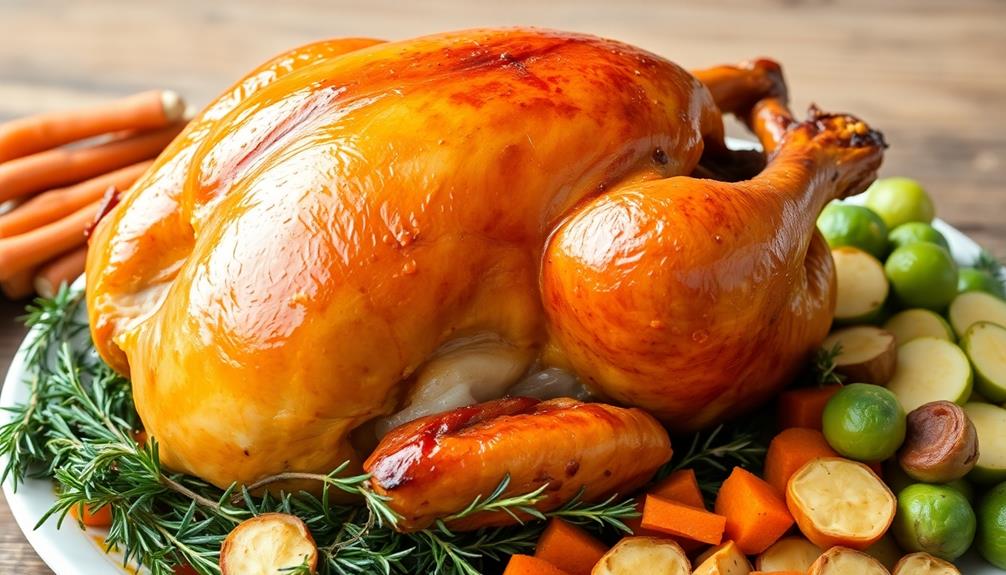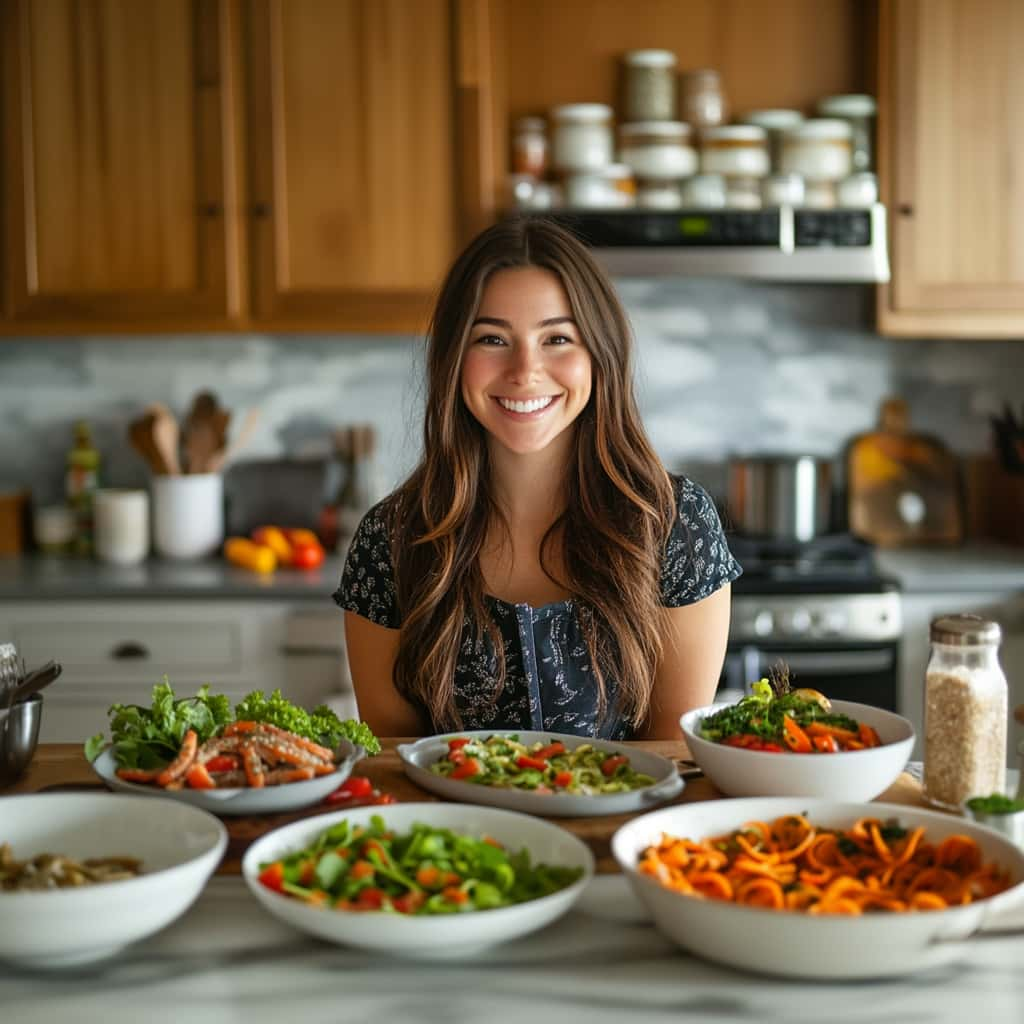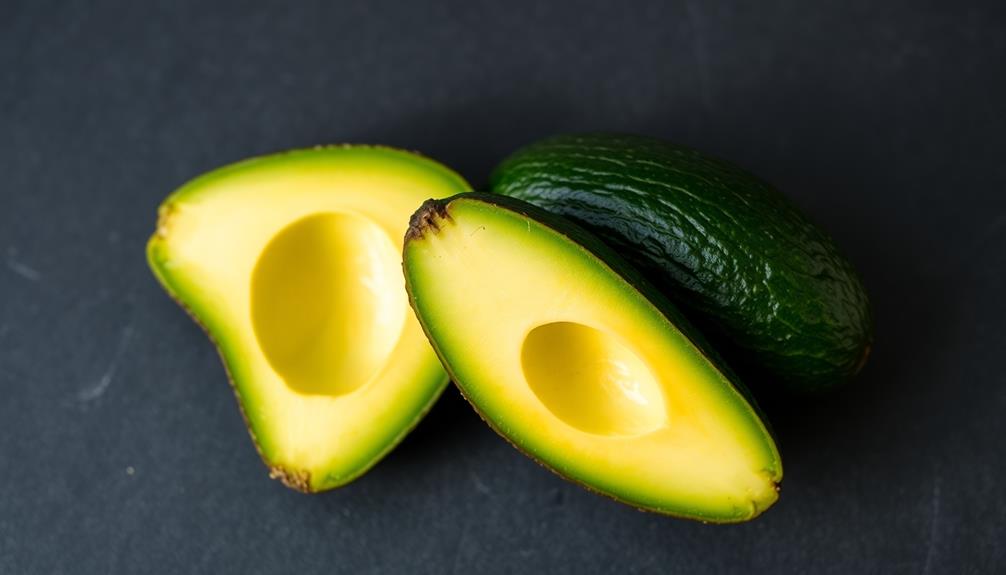With the right low-FODMAP tweaks, you can savor the holiday season's flavors without digestive distress. Swap out dairy with lactose-free milk, use gluten-free flour, and opt for low-FODMAP veggies like butternut squash. Season dishes with garlic-infused oil, enjoy low-FODMAP fruits like oranges, and explore alternative sweeteners. By focusing on ingredient awareness and recipe modifications, you can create festive dishes that nourish your body while fostering connection with loved ones. Balance enjoyment with health priorities, and remember – the true spirit of the holidays lies in the quality time spent together, not just the food. There's more to discover about embracing the low-FODMAP lifestyle during the holidays.
Key Takeaways
- Explore low-FODMAP ingredient substitutions, such as lactose-free milk and gluten-free flour, to enjoy traditional holiday dishes without digestive distress.
- Discover festive low-FODMAP recipes that incorporate savory spices, tender meat, and roasted vegetables for satisfying main courses and side dishes.
- Host low-FODMAP potlucks and swap recipes with friends to build a supportive community and expand culinary options during the holiday season.
- Prioritize health while celebrating, finding joy in the cooking process and ingredient exploration to balance dietary needs with holiday festivities.
- Focus on connection over food, remembering that the holiday spirit is about shared experiences, not just the menu, to foster an inclusive and fulfilling celebration.
History
The low-FODMAP diet has its origins in the 1990s, when researchers at Monash University in Australia began investigating the connection between certain carbohydrates and digestive issues.
They discovered that certain short-chain carbohydrates, known as FODMAPs (Fermentable Oligosaccharides, Disaccharides, Monosaccharides, and Polyols), can trigger symptoms in people with conditions like irritable bowel syndrome (IBS).
By identifying and limiting these FODMAP-rich foods, researchers found they could significantly improve digestive health for many individuals.
Over the years, the low-FODMAP diet has gained widespread recognition as an effective way to manage various gastrointestinal disorders.
It's now a well-established approach, with extensive research supporting its benefits.
Today, many people, including those dealing with holiday feasts, turn to the low-FODMAP diet as a way to enjoy festive meals without the burden of disruptive digestive symptoms.
Recipe
The holiday season is a time for gathering with loved ones and indulging in delicious meals. However, for those following a low-FODMAP diet, finding suitable recipes can be a challenge. This recipe for a low-FODMAP holiday dish is perfect for those with dietary restrictions, as it focuses on ingredients that are gentle on the digestive system.
This dish is a savory and satisfying option that can be enjoyed as a main course or a side. The combination of fragrant spices, tender meat, and roasted vegetables creates a flavorful and comforting meal that will have your guests asking for seconds.
Ingredients:
- 1 lb boneless, skinless chicken thighs, cut into bite-sized pieces
- 2 cups diced butternut squash
- 1 cup diced carrots
- 1 cup diced zucchini
- 2 tablespoons olive oil
- 1 teaspoon dried thyme
- 1 teaspoon dried rosemary
- 1/2 teaspoon garlic-infused olive oil (or use regular olive oil)
- 1/4 teaspoon ground black pepper
- 1/4 teaspoon salt
Instructions:
Preheat your oven to 400°F (200°C). In a large baking dish, combine the chicken, butternut squash, carrots, and zucchini. Drizzle with olive oil and sprinkle with thyme, rosemary, garlic-infused olive oil (or regular olive oil), black pepper, and salt. Toss the ingredients together until they're evenly coated.
Roast the mixture in the preheated oven for 30-35 minutes, or until the chicken is cooked through and the vegetables are tender.
When cooking this dish, be mindful of the FODMAP content of the ingredients. Butternut squash and zucchini are low-FODMAP, while carrots are considered moderately high in FODMAPs. To keep the recipe low-FODMAP, you can adjust the amount of carrots or substitute them with another low-FODMAP vegetable, such as bell peppers or green beans.
Additionally, be sure to use garlic-infused olive oil or regular olive oil, as garlic is high in FODMAPs and should be avoided on a low-FODMAP diet.
Cooking Steps
First, be sure to wash and chop your vegetables thoroughly.
Then, sauté your aromatics in a low-FODMAP oil.
Next, add your broth and seasonings, followed by the cooked vegetables.
Step 1. Wash and Chop Vegetables Thoroughly
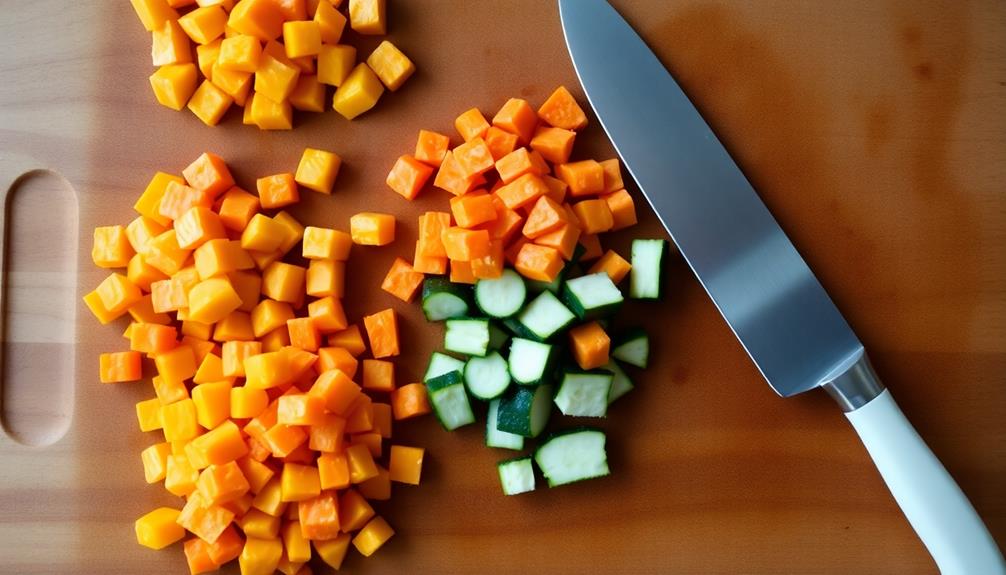
Thoroughly wash and chop your vegetables before proceeding with the recipe. This step is crucial for a low-FODMAP diet, as it helps remove any potentially problematic compounds.
Start by rinsing the vegetables under cool, running water to remove any dirt or debris. Then, use a sharp knife to carefully chop the vegetables into the desired size and shape. Pay close attention to the recommended serving sizes for each ingredient – this will ensure you don't accidentally consume too much of a high-FODMAP food.
When chopping, aim for uniform pieces so they cook evenly. Remember to thoroughly wash your hands and clean all surfaces and utensils to prevent cross-contamination.
Taking the time to properly prepare your vegetables sets you up for a successful, low-FODMAP holiday meal. With a little extra care, you can enjoy the flavors of the season without any unwanted digestive issues.
Step 2. Sauté Aromatics in Low-Fodmap Oil
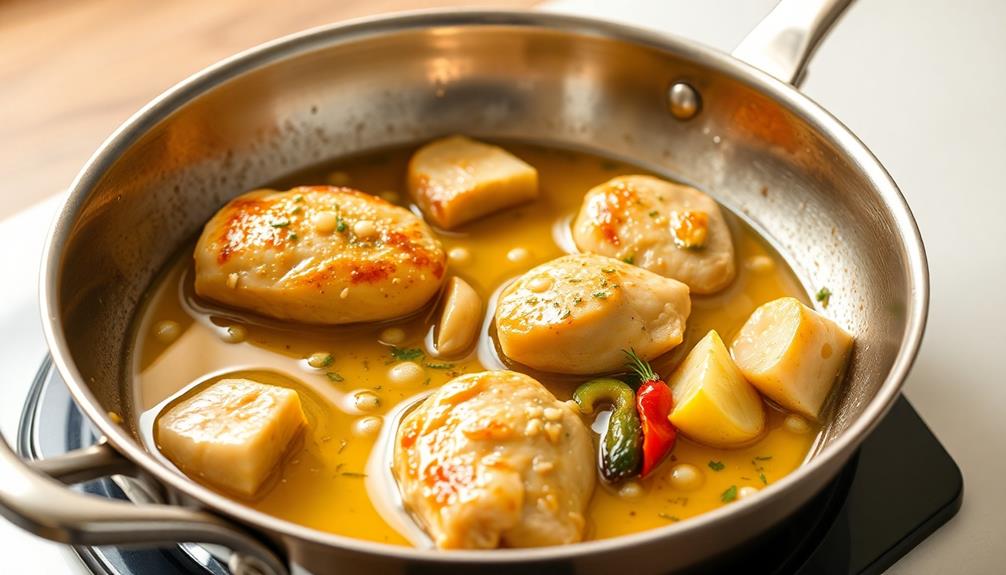
Next, in a low-FODMAP friendly oil like olive or avocado oil, sauté any aromatic ingredients called for in the recipe. This helps build flavor by releasing the oils and aromas from ingredients like ginger, garlic-infused oil, or scallion greens. Just be sure to avoid using high-FODMAP veggies like onions or garlic.
Sauté the aromatics over medium heat, stirring frequently, until they become fragrant and start to soften – usually 2-3 minutes. This quick cooking step adds a lovely depth of flavor to the dish. If the recipe calls for dried herbs or spices, you can add those in now too, allowing them to toast and bloom.
Once the aromatics are nicely sautéed, you're ready to move on to the next steps in the recipe. This simple prep work lays the foundation for a delicious low-FODMAP holiday meal that your digestive system will thank you for. Go ahead and get cooking!
Step 3. Add Broth and Seasonings
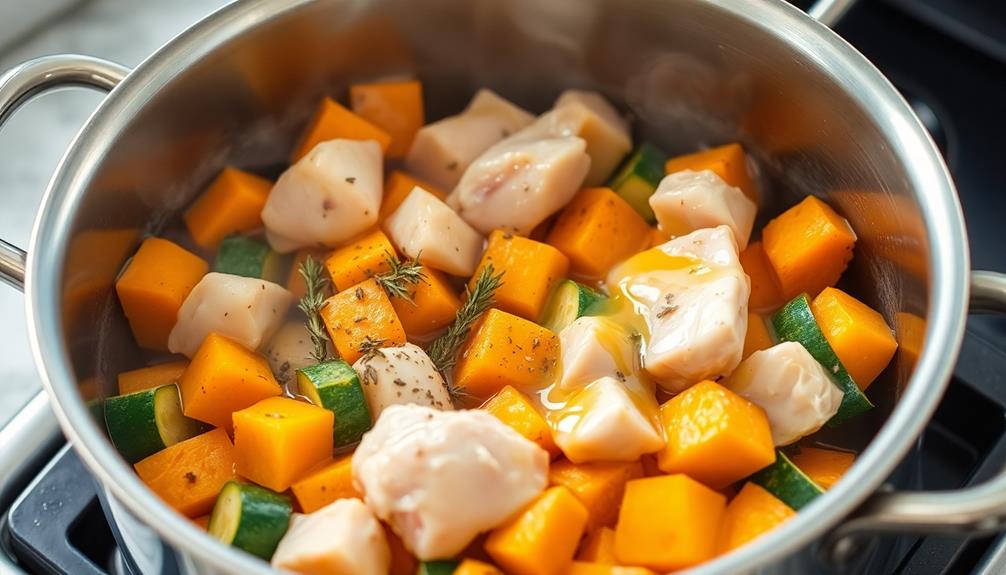
After sautéing the aromatics, it's time to add the broth and seasonings to your dish.
Pour in your chosen low-FODMAP broth, whether it's chicken, vegetable, or beef. Be sure to use a broth that's free of garlic, onions, and other high-FODMAP ingredients.
Bring the broth to a simmer, then add your desired seasonings. Dried herbs like rosemary, thyme, and oregano work great, as do spices like paprika, cumin, and black pepper.
Remember to go easy on the salt, as you can always add more later. Stir everything together until the flavors meld.
If the dish seems a bit dry, you can add a splash more broth. Taste and adjust the seasonings as needed.
The key is to build layers of flavor while keeping your ingredients low-FODMAP. With the right broth and seasonings, your holiday dish will be full of holiday cheer without any unwanted digestive distress.
Step 4. Add Cooked Vegetables
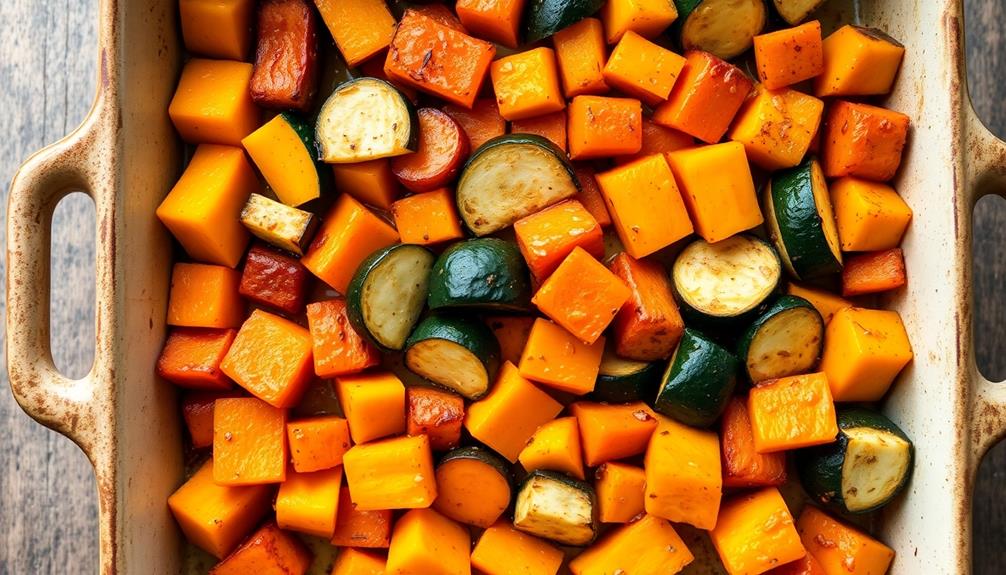
Once the broth and seasonings have been added, it's time to incorporate the cooked vegetables. This is where you can really start to build the flavors and textures of your low-FODMAP holiday dish.
Gently fold in the cooked veggies, making sure they're evenly distributed throughout the mixture. Whether you've roasted some carrots and zucchini or simmered some broccoli and green beans, these nutrient-dense additions will bring a wholesome heartiness to your recipe.
Be mindful not to overcook the vegetables – you want them to retain a bit of their crunch and vibrant color.
Taste as you go and adjust the seasonings as needed, adding a pinch more salt or a squeeze of lemon juice to really make the flavors pop. The key is to find that perfect balance between the savory broth, the aromatic spices, and the fresh, tender vegetables.
With a little care and attention, you'll end up with a low-FODMAP dish that's not only gut-friendly but also bursting with holiday deliciousness. You can easily create a festive feast that won’t upset sensitive stomachs while still pleasing every palate. By focusing on fresh, seasonal ingredients and simple recipes, you’ll craft a spread that’s both satisfying and budget-friendly. With a little creativity, you can also explore affordable meal ideas that don’t compromise on flavor or nutritional value.
Step 5. Simmer Until Vegetables Are Tender
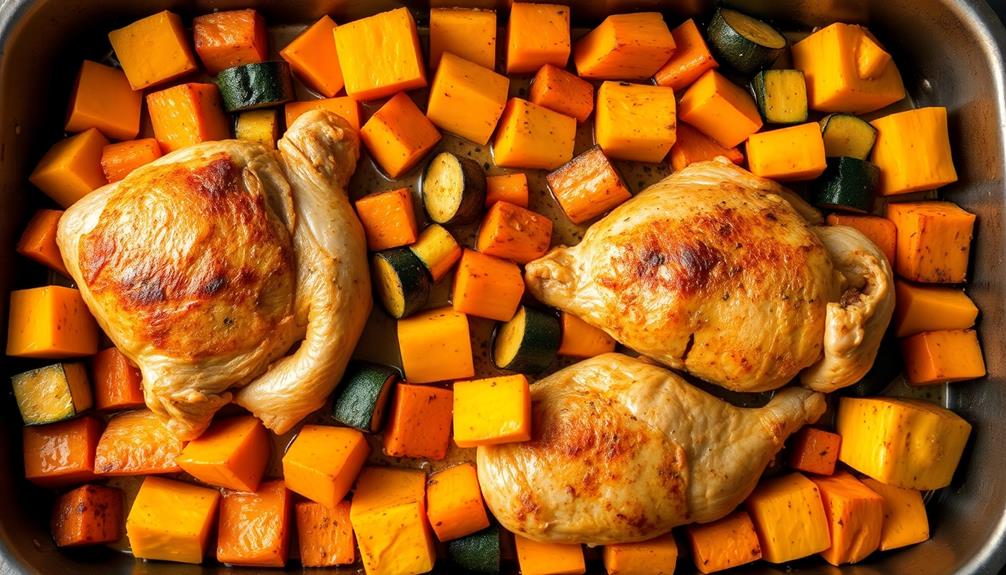
With the cooked vegetables incorporated, it's time to simmer the mixture until the veggies are tender and the flavors have had a chance to meld.
Bring the pan to a gentle simmer over medium heat, then reduce the temperature to low. Let the mixture gently bubble, stirring occasionally, for 15-20 minutes. This slow simmering allows the flavors to fully develop and the vegetables to reach the perfect tender-yet-still-slightly-firm texture.
Keep a close eye, adjusting the heat as needed to maintain a gentle simmer without letting the mixture boil vigorously. When the vegetables are fork-tender, you're ready to move on to the next step.
This simmering process infuses the dish with rich, well-rounded flavor, so don't be tempted to rush it. Take your time and savor the aromas as the holiday feast comes together.
Final Thoughts
Undoubtedly, the world of low-FODMAP cooking can seem daunting, especially during the holiday season.
However, with a bit of planning and creativity, you can enjoy festive meals without the dreaded digestive issues. The key is to embrace the wide array of low-FODMAP ingredients at your disposal and experiment with new recipes that cater to your dietary needs.
Remember, the low-FODMAP lifestyle is all about finding the right balance. Don't be afraid to swap out high-FODMAP items for their low-FODMAP counterparts, like using lactose-free milk or gluten-free flour.
And don't forget to have fun with it! Hosting a low-FODMAP potluck or swapping recipes with friends can make the experience more enjoyable.
Ultimately, the holiday season is about cherishing time with loved ones. By adopting a low-FODMAP approach, you can savor the festivities without sacrificing your well-being.
Frequently Asked Questions
What Ingredients Should I Avoid on a Low-Fodmap Diet?
On a low-FODMAP diet, you'll need to avoid ingredients like onions, garlic, wheat, dairy, apples, pears, and beans. Instead, opt for low-FODMAP alternatives like scallions, lactose-free dairy, and gluten-free grains to enjoy your meals without digestive discomfort.
How Can I Modify Traditional Holiday Recipes for Low-Fodmap?
When modifying traditional holiday recipes for a low-FODMAP diet, you can substitute ingredients like lactose-free dairy, gluten-free flours, and low-FODMAP fruits and vegetables. Experiment with herbs and spices to enhance flavors without triggering digestive issues.
Are There Any Low-Fodmap Substitutes for Common Baking Ingredients?
You can find low-FODMAP substitutes for common baking ingredients like using lactose-free milk, gluten-free flour, and maple syrup instead of honey. These swaps help you enjoy baking while managing your dietary needs.
How Long Can Low-Fodmap Holiday Dishes Be Stored and Reheated?
Low-FODMAP holiday dishes can generally be stored for 3-4 days in the refrigerator and reheated with care. Be mindful of food safety guidelines, and consider freezing larger portions for longer-term storage if needed.
What Are Some Tips for Hosting a Low-Fodmap Holiday Gathering?
When hosting a low-FODMAP holiday gathering, provide a variety of dishes, label ingredients, and offer alternatives to common high-FODMAP items. Encourage guests to ask questions and accommodate their dietary needs. Make it a festive, enjoyable experience for all.
